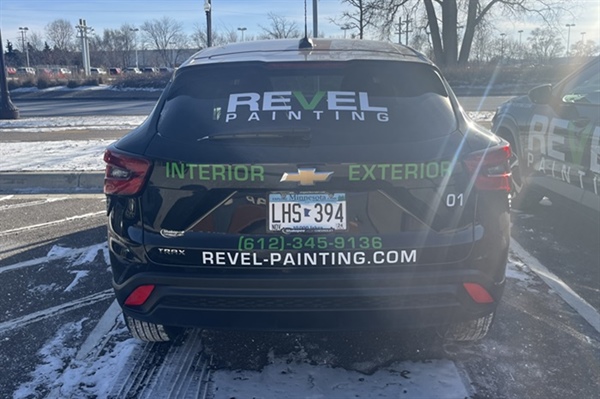DIY vs. Hiring a Professional: 8 Factors to Consider

When it comes to home improvement projects, one of the biggest decisions homeowners face is whether to take the DIY route or hire a professional. Painting, in particular, seems like a manageable DIY project, but there are several factors to weigh before picking up a brush.
While a DIY approach may seem cost-effective, it requires time, effort, and the right tools. On the other hand, professional painters bring experience, efficiency, and long-lasting results. The right choice depends on various factors, including budget, skill level, and project complexity.
In this guide, we’ll break down eight key factors to consider when deciding between DIY and professional painting. We'll explore cost comparisons, the time and effort involved, quality and durability expectations, necessary tools and materials, and the risks associated with DIY painting. By the end, you’ll have a clearer understanding of which option suits your needs best!
Cost Comparison: Is DIY Really Cheaper Than Hiring a Pro?
At first glance, DIY painting appears to be the more affordable option. Homeowners can save on labor costs by doing the work themselves and purchasing paint and supplies at a lower price than a professional would charge. However, the real cost of DIY painting goes beyond just materials. Expenses such as brushes, rollers, painter’s tape, drop cloths, ladders, and even specialty equipment like sprayers can add up quickly.
Additionally, mistakes in a DIY paint job can lead to costly fixes. If uneven coats, visible brush strokes, or paint spills occur, correcting these issues can require extra materials and time. In contrast, professionals bring efficiency, expertise, and high-quality finishes, reducing the likelihood of rework. When factoring in potential repainting costs, lost time, and supplies, hiring a professional may offer better long-term value.
Time and Effort: How Much Work Are You Willing to Do?
Painting a room may seem simple, but the process involves several time-consuming steps. Preparation—such as moving furniture, taping trim, patching holes, sanding surfaces, and applying primer—can take hours before a single coat of paint is applied. Once painting begins, multiple coats may be necessary for even coverage, followed by cleanup, which includes washing brushes, removing tape, and disposing of materials properly.
For a homeowner juggling work and family commitments, DIY painting can quickly turn into a frustrating, drawn-out process. On the other hand, professionals streamline the job with efficient techniques and trained crews. A project that might take a weekend or longer for a DIYer can often be completed in a single day by experienced painters, saving time and effort.
Quality and Durability: Can a DIY Job Match Professional Results?
Achieving a smooth, even finish requires more than just applying paint to a surface. Proper surface preparation, high-quality materials, and professional application techniques play a significant role in the durability of a paint job. DIY painters often struggle with streaks, roller marks, uneven coverage, or poor adhesion due to improper surface prep.
Professional painters use high-grade materials suited for different surfaces and conditions. They also understand how to handle challenges like humidity, temperature changes, and textured walls. Their expertise ensures a consistent, long-lasting finish that resists chipping, peeling, and fading over time.
Tools and Materials: Do You Have Everything Needed for the Job?
A professional-quality paint job requires more than just a can of paint and a brush. Proper tools include rollers, extension poles, angled brushes, drop cloths, painter’s tape, caulking guns, and safety gear like gloves and masks. Specialty projects—such as painting cabinets, exteriors, or textured walls—may require sprayers, scaffolding, or industrial-grade primers.
Investing in all the necessary tools can be expensive, especially for a one-time project. Professionals already have access to industry-standard equipment and premium-quality paints, ensuring efficiency and superior results. Additionally, they understand the right product choices for different surfaces and environmental conditions, preventing costly mistakes.
Before committing to DIY, homeowners should evaluate whether they have the right equipment or if hiring a professional would be more practical.
Risk and Safety: What Are the Potential Hazards of DIY Painting?
While painting may seem low-risk, DIY projects come with potential hazards. Working at heights, such as painting ceilings or exterior walls, requires ladders and scaffolding, increasing the risk of falls. Handling chemicals like primers, stains, and oil-based paints also exposes DIYers to fumes and skin irritation if proper ventilation and protective gear aren’t used.
Electrical hazards, such as painting around outlets and fixtures, can pose additional risks. Professionals are trained in workplace safety and follow strict protocols to prevent accidents. They also have insurance coverage, protecting both workers and homeowners from liability in case of injuries or property damage.
For homeowners considering a DIY paint job, it’s important to assess these risks and take the necessary precautions before starting.
Choosing the Right Option for Your Project
Deciding between DIY and hiring a professional depends on budget, time availability, skill level, and project complexity. While DIY painting can be cost-effective for small, simple jobs, larger projects often benefit from the efficiency and expertise of professional painters.
With the right approach, you can achieve a high-quality paint job that enhances the beauty and longevity of your space. For homeowners looking to ensure flawless results, contact us to discuss your painting project with the experts at Revel Painting.